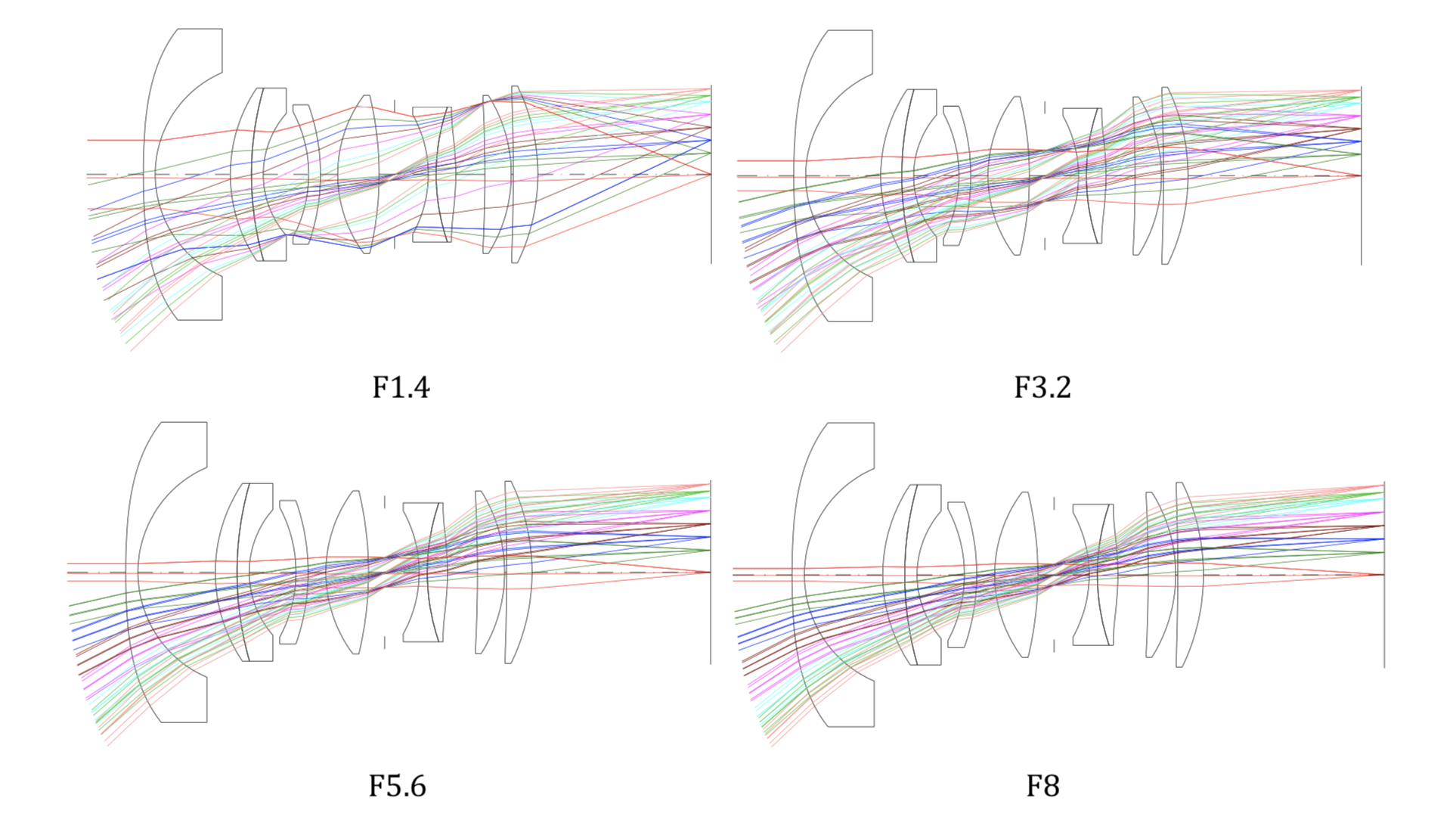Design of a rectilinear wide angle lens for cave photography
Cave photography requires lightweight, wide angle lenses with fast apertures to capture a large field of view with short exposure times in low-light conditions. This project explores the design of a 24 mm focal length, F/1.4 wide angle rectilinear lens to capture large scenes in caves. The lens is modelled after a fixed focal length lens by Canon with these same specifications which uses 13 elements and two aspheric surfaces. The performance of this Canon lens is used as a benchmark for all performance evaluations. MTF, Distortion, and Relative illumination are used as the primary evaluation metrics, along with packaging and manufacturing constraints. The starting point is a 1976 patent by Canon with the same focal length and F/number with 10 elements and one aspheric surface. The importance of vignetting, field weighting, and patience in lens design are discussed as major challenges during the optimization of the lens. The final design has 9 elements and two aspheric surfaces; it was optimized over four different f/stops and four object distances to account for different configurations photographers would use in a cave. The nominal design is manufacturable, however there is room for improvement in future designs to achieve better performance and manufacturability. To access the report and the design files, please send me an email.

Submitted as the final project for OPT444, Lens Design (Graduate class), Spring 2015.
Supervised by Professor Julie Bentley, Institute of Optics, University of Rochester, Rochester NY.